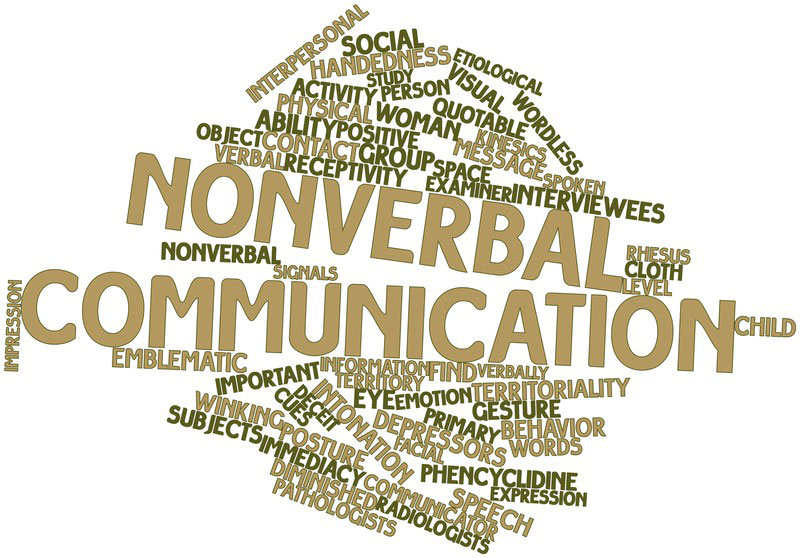Body language is the oldest means of communication and continues to be significant in present times. A person’s nonverbal communication such as smiles, pauses, gestures, posture, and ambient sounds convey meaning, mood and personality. In fact, many lawyers use a digital transcription service provider to document deposition testimonies and court proceedings and also use video at these events to capture and study the mannerism, tone of voice, attitude, demeanor, and poise of the witness. Videotape depositions can clearly and accurately preserve the testimony of the witness and text-video synchronization helps lawyers during the trial.

Body language matters a lot in the modern workplace. In fact, communication experts say that nonverbal cues can constitute 50% or more of what we are communicating to other people. Using nonverbal tools effectively to match your verbal is crucial to support the effectiveness of your message, point or question. Here are the reasons why body language matters:
- Facial expression: Your face is a mirror of your feelings, thoughts and emotions such as anger, happiness, disgust, confusion, and boredom. Forbes Emotional Intelligence guru Travis Bradberry says, “Scowls turn people away, as they feel judged…” even if the expression has nothing to do with your mood or the meeting at hand. “Frowning, grimacing, and other negative facial expressions signal your brain that whatever you are doing is difficult… (/www.westuc.com).
- Body gestures: According to body language expert and speaker Patti Wood, nonverbal communication matters a lot if you’re a leader. FenderBender cites her as saying, “The way you walk, the tone of your voice, the look in your eye tells everyone how much power you have, what kind of day you’re having, if you believe in what you’re saying, as employees will model the behavior and perform at varying levels based on these cues”. Fidgeting is another common gesture. It can convey nervousness and lack of focus, especially when in a meeting.
- Posture: Bad posture such as slouching at the desk can convey that you are not competent or are lazy. People could also interpret slouching as a negative, inattentive or uncaring attitude. Bearing, stance, rigidity, and uprightness, are all factors which convey a message.
- Eye contact: Not meeting someone’s eye will make others around you to think that you don’t want to engage with them. Importantly, making good eye contact is often associated with reliability and trustworthiness. Looking down while speaking can be interpreted as a lack of confidence or insecurity. In business, making eye contact is particularly important when you are introduced to someone and when they are speaking to you.
- Gestures: A Time article notes that gestures like crossing your arms over your chest, turning your body away when someone is speaking, or placing objects between you and the person you’re speaking to are “closed cues” that people should look out for. These gestures can signal that you are not comfortable in an interaction. Even actions like placing your hands on your hips and waving can convey messages inadvertently.
- Clothing and grooming: How you dress at work can send a powerful nonverbal message. Depending on the office dress code, a person who is well put together exudes confidence and earns respect. Casual is fine if the dress code allows, but soiled and sloppy clothes are not!
- Space: Respecting personal space is important. Proximity is viewed differently in different cultures. The key is to ensure that the person you are communicating with is comfortable. People tend to feel uncomfortable if the acceptable distance is violated.
CNBC recently reported on how Microsoft founder Bill Gates and Amazon founder Jeff Bezos use body language effectively when addressing an audience. Carole Railton who analyzed popular TED talks notes that Bezos “leans to the left side of his body which conveys a natural confidence and a willingness to open up to the audience, and he leans into the audience indicating his need for them to listen and engage.”
Body language speaks volumes, so pay attention to it. In an office setting, positive and neutral body language that reinforces verbal communication is important. Nonverbal communication is also a critical aspect of interpersonal communication in the courtroom, classroom, health settings, and more. Transcription outsourcing companies that offer transcription of court hearings, police transcription, medical transcription, insurance claims, and employee disciplinary meetings specialize in capturing this nonverbal communication. They can provide verbatim transcripts that capture both verbal and nonverbal elements in quick turnaround time. Transcribing every um, uh, hmm, stutter, false start, noise and sound as well hand gestures, etc. in the recording provides better meaning to what the person said.



